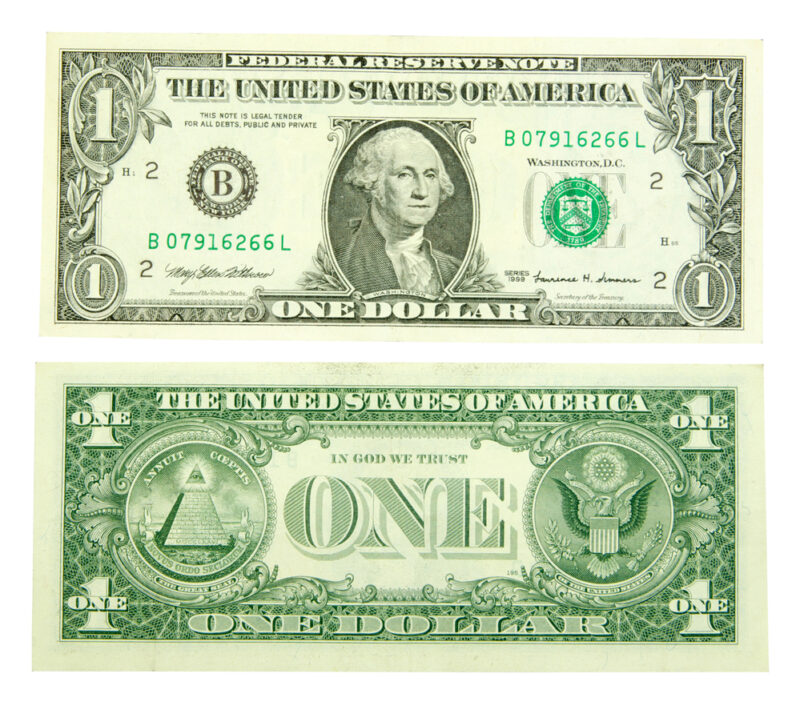About 50 years ago, U.S. President Richard Nixon put an end to the conversion of the dollar into gold bullion at a fixed price. This move was the death knell for the Breton Woods monetary agreement. The last 50 years have brought with it many surprises, one of which is the sustained dominance of the U.S. currency for international transactions.
The supremacy of the U.S. dollar was easily explained while under Bretton Woods. As countries emerged from the damages incurred during the Second World War, the United States was impregnable. It was unthinkable at the time to suggest any changes in the dollar to gold conversion rate. There were reasons for this, firstly because of the dollar’s financial strength, and secondly, devaluation could impact other currencies.
It was thought at the time that the move would have a detrimental impact on the role of the dollar. With a fluctuating dollar, it was believed that the risk would be too high for companies and governments. They would begin to diversify, by holding more significant reserves, and by conducting an ever-increasing number of transactions in alternative currencies.
These concerns were never an issue, and the reason is apparent. The United States dollar was incumbent. Customers, as well as suppliers, both used dollars. This fact made it significantly more complicated to move to alternative currencies. Furthermore, the alternatives were and still are, far less attractive.
CBDC’s May Be the Game-changer
There are issues with both the Euro and Yuan that make it challenging to conduct business with them. Many think that central bank digital currencies (CBDCs) will have a significant impact on the status quo. The financial world is entering the digital age, an age when any nation’s money will be as simple to use as any other for cross-border transactions. This ability will significantly reduce transaction costs and, some argue that CBDCs will erode the dominance of the dollar.
Although the scenario sounds ideal, it does not necessarily follow.
Assume for the moment that South Korea issues a CBDC that can be held in digital wallets and used in making transactions. A Central American coffee exporter can then be paid in digital Korean Won, this based on the assumption that foreign entities are allowed to download a Korean wallet. The exporter in Columbia will still have to convert Won into a more functional currency. If a correspondent bank makes the conversion with a New York office or accounts, and if the more useful currency is the dollar, everything is back where it started.
As an alternate scenario, both the central banks of both Columbian and South Korea could issue wholesale CBDCs. Both central banks would transfer digital currency to commercial banks in each country. The commercial banks would then deposit it into a client’s account. As a result; the coffee exporter would have a credit in their Korean bank rather than a digital wallet. In order to have useable currency, the exporter would need to have the bank in Korea locate a correspondent to convert the digital balance into U.S. dollars and then convert dollars into pesos.
It would change the game considerably if CBDCs were interoperable. The payer in Korea would ask its bank to issue a won-denominated depository receipt. As this is done, a corresponding amount of CBDC would be extinguished in the payer’s account. The resulting won-denominated depository receipt would be exchanged for a depository receipt in pesos at the best rate offered by local dealers. The payee’s bank account in Columbia would then be credited with digital local currency, and the depository receipt would be extinguished.
The transaction would be consummated in real-time. The cost would be a fraction of what it is currently.
Conditions are Formidable
The conditions to make this scenario work are formidable. In a world of some 200 different currencies, arrangements would call for thousands of bilateral agreements, something that simply is not workable. Rules would, by necessity, be far more elaborate than those currently in place at the IMF and WTO, something that is not going to happen.50
WeInvests is a financial portal-based research agency. We do our utmost best to offer reliable and unbiased information about crypto, finance, trading and stocks. However, we do not offer financial advice and users should always carry out their own research.
Read More













